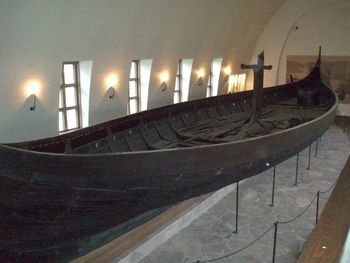Dendrochronology: Difference between revisions
imported>Richard Nevell No edit summary |
mNo edit summary |
||
| Line 4: | Line 4: | ||
==References== | ==References== | ||
{{reflist}} | {{reflist}}[[Category:Suggestion Bot Tag]] | ||
Latest revision as of 06:01, 6 August 2024

Dendrochronology is the practice of using tree rings to provide dates. A cross-section of a tree shows its seasons of growth in rings; these rings are of varying thickness depending on the climate, influencing how the tree grew that year. The growth pattern will be repeated across trees of the same species within an area of a single climate type. When there is a record of tree ring development for an area, a sample can be placed within this framework, giving a date for when the timber grew. Dendrochronology can be used to date when a timber building was erected (eg: soon after the timber was felled, and therefore stopped growing, though it may have been used for repairs). Since wood is organic and can be securely dated it can be used to calibrate radiocarbon dates. The method was developed in the earlier 20th century by American astronomer A. E. Douglass and spread to Europe in the 1930s; it only became widely used in archaeology from the 1960s onwards. A limitation of the method is that it is not effective in the tropics, where the climate changes less between seasons so growth rate is more regular.[1]
References
- ↑ Renfrew, Colin & Bahn, Paul (2004). Archaeology: Theories, Methods and Practice, 4th edition. Thames & Hudson. 137–140. ISBN 0-500-28441-5.